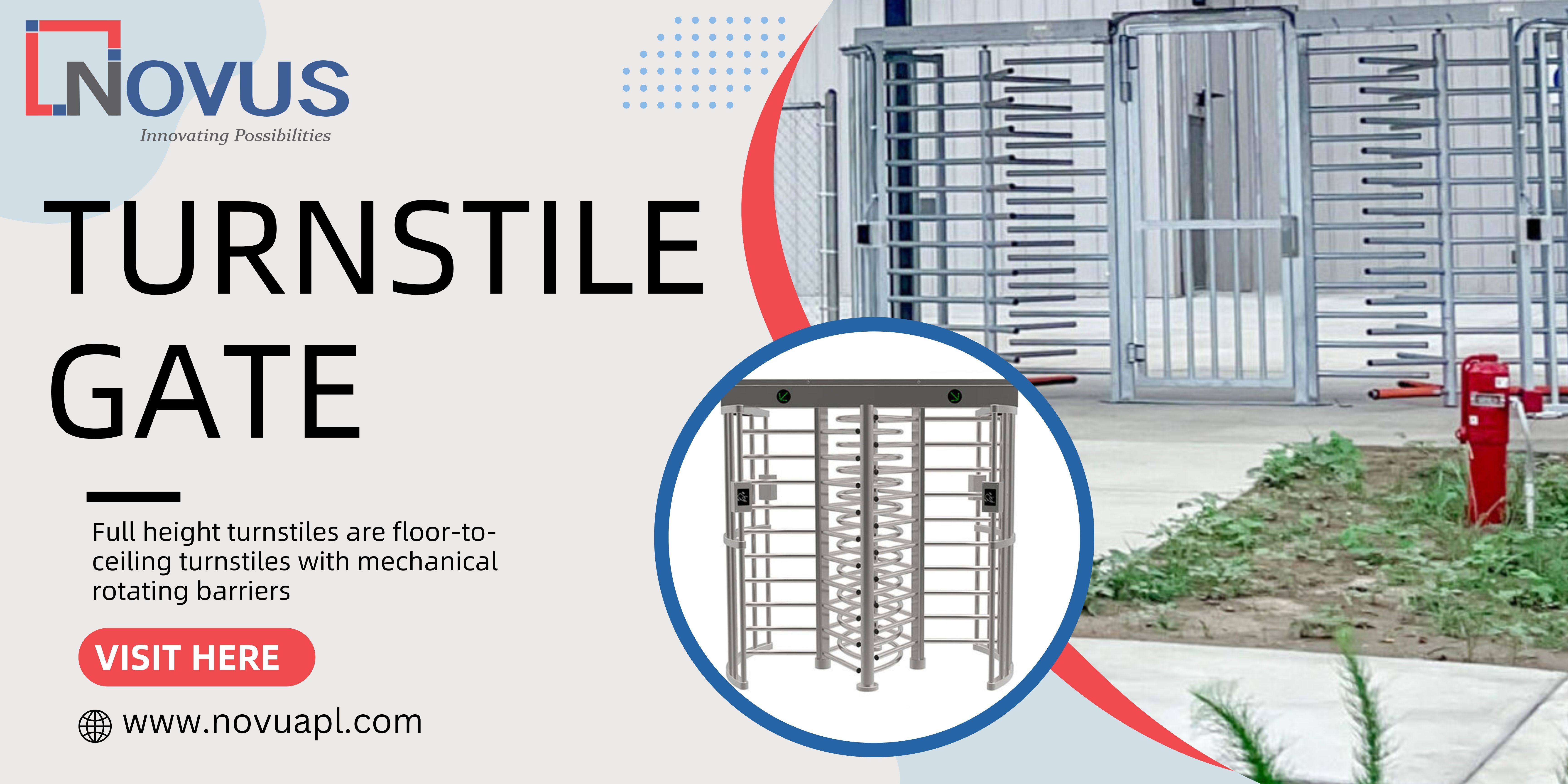- sales@novusapl.com
- +91-7290044421

3) Real-Time Monitoring and Reporting
A turnstile is a mechanical gate consisting of rotating horizontal arms, typically used at the entrance to a facility to allow one person at a time to pass through. They are often seen at stadiums, subway stations, amusement parks, and other venues where crowd control is necessary. Turnstiles can be operated manually or automatically, and they are commonly used for ticket validation or to ensure that only authorized individuals can enter a particular area.
Automatic turnstile gate is equipped with advanced access control mechanisms, such as proximity card readers, biometric scanners, or barcode scanners. These systems allow authorized individuals to pass through seamlessly while restricting access to unauthorized personnel. By implementing robust access control measures, organizations can safeguard sensitive areas and assets, minimizing the risk of security breaches.
Many automatic turnstile gates are integrated with sophisticated software that enables real-time monitoring and reporting. Security personnel can remotely monitor pedestrian traffic, track entry and exit data, and generate comprehensive reports for analysis. This real-time visibility empowers organizations to identify security vulnerabilities, optimize operational efficiency, and make informed decisions to enhance overall security posture.
A vertical tripod turnstile is a type of access control mechanism used to manage the flow of people entering or exiting a facility. It consists of a rotating set of three horizontal arms arranged in a tripod configuration that allows one person to pass through at a time. Here are some key features and benefits of vertical tripod turnstiles.
A tripod turnstile gates is a type of pedestrian gate that controls access to secured areas. It features three rotating arms set at 120-degree angles from each other, allowing only one person to pass through at a time. Tripod turnstiles are commonly used in various settings to ensure orderly and controlled access. Here’s an overview of their features, benefits, applications, and installation considerations:
automatic turnstile gates represent a cornerstone technology for enhancing security and efficiency in various environments. With advanced access control features, real-time monitoring capabilities, and seamless integration options, these gates offer a comprehensive solution for access management and pedestrian control. By investing in automatic turnstile gates, organizations can fortify their security defenses, streamline pedestrian flow, and create a safer and more secure environment for employees, visitors, and assets alike.
A turnstile gate is a type of gate that allows one person to pass through at a time, providing controlled access to secured areas.
Turnstile gates work by rotating arms that permit one person to pass through per rotation. Access is granted via input from access control systems such as keycards, biometric readers, or tickets.
Turnstile gates can be integrated with various access control systems including: RFID card readers Biometric scanners (fingerprint, iris, facial recognition) Barcode and QR code readers Ticketing systems Mobile credential systems
Maintenance involves regular inspections to ensure all mechanical and electronic components are functioning correctly.
Motorized turnstile gates require a stable power supply, typically standard AC power. Backup power solutions like batteries or UPS systems can be used to ensure operation during power outages.
Accelerate Your Business with Novus Automation
Become a Partner